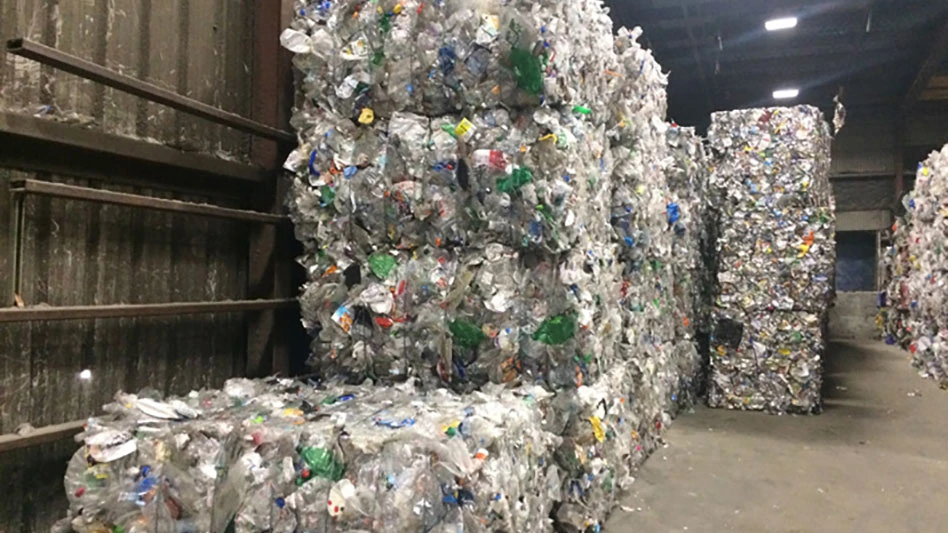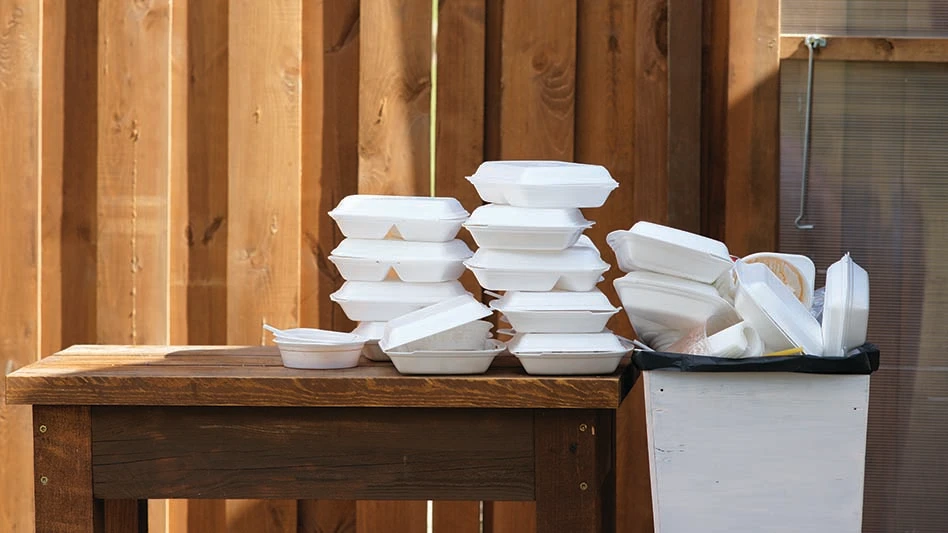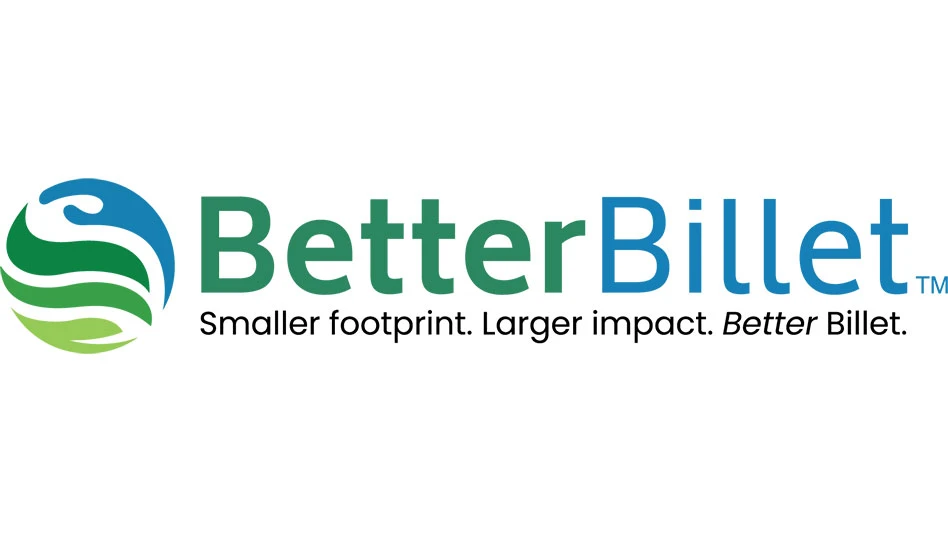Chicago was ground zero for the paper recycling industry for two days in late June. On June 24 and 25, more than 400 paper recyclers and their suppliers met at the Paper Recycling Conference & Trade Show, held at the Fairmont Hotel in downtown Chicago and hosted by the Recycling Today Media Group.
The show was the second event of its kind, and attracted more attendees and exhibitors than the debut conference, which was held in June of 2000 in Atlanta.
Attendees were able to meet with fellow processors and traders of recycled paper, as well as mill buyers, throughout the two days of the event. Many of the conference’s networking sessions took place in the exhibit hall, where products and services from more than 30 industry supplier companies were on display.
In coordination with the show, the Paper Stock Industries (PSI) chapter of the Institute of Scrap Recycling Industries Inc. (ISRI), Washington, held its summer meeting, as did the recycling division of the American Forest & Paper Association (AF&PA), Washington.
The conference’s sessions covered a variety of topics and featured panelists from some of the industry’s largest dealers, brokers and mill consumers.
NEAR-TERM DEMAND OUTLOOK
Slower industrial production, a decline in newspaper advertising and other factors are negatively affecting end markets for scrap paper, according to keynote panelists at the conference.
“What a difference a year makes,” panelist moderator Bill Moore of Moore & Associates, Atlanta, said in regard to scrap paper markets in June 2001 versus pricing one year ago. “A year ago it was a pretty strong market—though it was starting to erode—but we found out it had a long way to go down further.”
Dave Stevens, general manager of the recycling division of Smurfit-Stone Container Corp., Chicago, noted that total U.S. consumption of old corrugated containers (OCC) declined 6% in 2000 and that “the trend is continuing” in 2001.
A slump in overall industrial production has also curtailed orders for corrugated packaging, meaning OCC generation has also dropped off. The cardboard container industry has responded to the slump by shutting down 2.6 million annual tons of production, but Stevens estimates that “there’s still excess capacity of 1.365 million tons in addition to the 2.6 million that is now offline.”
The domestic overcapacity situation, according to Stevens, is “not good for the OCC business, [and] not good for the recycling business,” and at one point interrupted his presentation by asking the audience, “This is all gloom and doom, isn’t it?”
An increasing amount of OCC is making its way to China, where manufacturers are “using more containerboard to ship their finished products to the U.S.,” Stevens noted. The value of Chinese goods shipped to the U.S. nearly doubled in four years, rising from $52 billion in 1996 to $101 billion in 2000.
Regarding the near-term outlook for the OCC grade, Stevens said, “I don’t look for any spiked prices any time this year.”
The growth of curbside collection programs in the U.S. and other parts of the world has caused supply to swell beyond demand for some grades, said Rick Mason of Perry H. Koplik & Sons, New York. “There are really no market forces slowing the flow of supply, but demand is turned on and off by paper makers,” he remarked.
Mason called pricing “our industry’s judge and jury,” and noted that in the one year between Paper Recycling Conferences, OCC prices had fallen from $113 per ton to $38 while other grades such as mixed paper have also experienced sharp drops.
Like Stevens, Mason did not predict an immediate turnaround. “Most paper companies do not see a change in pricing until Spring 2002 at the earliest,” he remarked.
Jim Porter, president of Solvay Paperboard, Syracuse, N.Y., referred to himself as an optimist, although he acknowledged that “Mr. Greenspan’s soft landing is a little bumpy right now.”
Echoing Stevens to some extent, Porter noted that domestic box orders are down and an overcapacity of boxboard and box-making production existed. “The key is domestic balance; we’ve got to get our industry in balance within our shores,” he commented.
Despite the near-term pain, Porter said his optimism stemmed from the ability of recycled-content mills to gain cost advantages over virgin pulp mills and to gain the upper hand in the long term. “I don’t see any virgin pulp mills being built [in the U.S.] in the foreseeable future,” he remarked.
A market threat that all three panelists are aware of is the plastic industry’s attempt to gain container market share. “The industry’s very concerned about plastic packaging taking over from the corrugated case,” said Stevens, who added that plastic began making its inroads in the late 1990s when corrugated box prices were higher.
CONSOLIDATION A CLEAR TREND
A flurry of mergers and acquisitions leading to paper mill consolidation was one of the clearest patterns noted by panelists at a session on secondary fiber trends.
Paper companies are also increasingly choosing to use scrap paper as their feedstock of choice, moderator Pete Grogan of Weyerhaeuser, Federal Way, Wash., noted. “The majority of new production in the mill industry—at least 65%—will be based on recovered fiber,” he commented.
The consolidation of the once-fragmented paper industry was observed by panelists Bruce Fleming, of recycling company Canusa Corp.; Ben Harvey of solid waste and recycling company E.L. Harvey and Sons Inc., Westboro, Mass.; Baltimore, and David Niessner, of International Paper, Stamford, Conn.
“The bottom line is, look for more consolidation and fewer suppliers,” Fleming told attendees. To both compete with consolidating recycling companies and to serve smaller mill customers, Fleming outlined some of Canusa’s partnership strategies with generators and paper mills that have helped the company keep its volume procurement and pricing competitive. (A complete look at Fleming’s presentation can be found in the July 2001 issue of Recycling Today.)
Independent recycler Harvey credited technology improvements for helping his company stay competitive with publicly traded consolidators in the solid waste and recycling industries. Harvey’s company is also moving toward the expanded use of long-term contracts with consumers. “In a market like today’s, movement is the critical key.”
The New Englander noted that his company strives to achieve a familiarity with customers similar to what patrons enjoyed at the tavern in the television show “Cheers.” “Our customers want to be known, and our familiarity with them can help counter the confusion caused by consolidation. We strive to maintain a one-on-one relationship with our generators and on the mill side. Service is even more important than price.”
While E.L. Harvey & Sons has been competing with consolidating waste haulers for some time, Ben Harvey says the ability of large recyclers to offer floor pricing to generators “is something our company cannot do. That could change the whole dynamic of what we do.”
International Paper’s Niessner, who is the company’s manager of recycled fiber procurement, noted that even after the recent mergers, the paper industry is “still pretty fragmented next to the oil industry or the auto industry.”
The four largest containerboard companies held 40% of the U.S. market in 1996, while by 2000, the four largest companies had 55% of the market, according to Niessner.
|
Internet Trading Prepares for Chapter Two |
|
With the failure of most Internet trading sites for the recycling and paper industries in the past 12 months, Chapter Eleven has been the most common literary reference within the e-commerce segment of the recycling industry. But speakers at a session on e-commerce at the Paper Recycling Conference and Trade Show seem to agree that a second chapter is about to begin in the Internet trading of recyclable commodities. Referring to the disappearance of “dot-bombs” and “dot-deads,” Jan Marrs of ForestExpress, Atlanta, said “the dust is settling [and] people are using the Internet more on a daily basis.” ForestExpress, funded jointly by several of the largest paper companies, is preparing to roll out its scrap paper trading format this fall. John Daniel, of Enron Industrial Markets, Houston, offered his view that bulk scrap paper commodities—such as old corrugated containers (OCC) and old newspapers (ONP)—were ideal for Internet-based trading, but that specialty grades are better handled by existing methods. Daniel says Enron is concentrating on those bulk grades and is taking an approach different from many of the closed-down dot-coms by acting as both a buyer and seller on its site and by owning physical assets in the paper recycling industry. He noted that buyers and sellers are beginning to respond to the Web site, sometimes telephoning to finalize transactions based on the pricing they see on the screen. Enron, with substantial assets and broader operations, can afford to wait for traders to get used to dealing with its online methods, said Daniel. He added that Enron’s online natural gas brokers are now conducting more business than New York Mercantile Exchange brokers of that commodity. John Robb of RecycleNet Corp., Guelph, Ontario, Canada, proudly assumed the role of the small business person on the panel. Robb noted that RecycleNet started as a print publication that listed recyclable commodities—often material odd lots—for sale to other recyclers. The company transferred that concept online and has slowly built a business as an online bulletin board for recyclers. He remarked that one reason RecycleNet has stayed solvent while so many others have come and gone is that, “We spend less than we make. Anybody who doesn’t do that, and who gets money from an artificial source and then spends through that, is dead.” Robb criticized the methods of several of the failed businesses. “We focus on a very small portion of e-commerce—sales and marketing. If you’re in business today, that means you already have a methodology. We’re not out to change that. We’re not in the middle of the transaction.” Taking one last shot at the now defunct trading sites, Robb said they “didn’t have a business to begin with,” and that there could be “no such thing as a pure-play Internet company. Once Amazon began doing business they needed warehouses; that’s overhead.” |
Centralized buying by mill companies is an issue of concern to brokers and to independent recyclers like Harvey, the panelists noted. “The role of the brokers is really being diminished as we handle more of our fiber internally,” said Niessner.
“Certainly that changes the relationship [with a mill],” said Harvey of when a centralized buying program is put in place. “We’re not a large enough player to . . . make a dent in the needs of the consolidating operations. It’s a little intimidating when Smurfit-Stone takes over almost every container plant in the Northeast.”
MORE WORK TO DO
The U.S. secondary paper recovery rate can move beyond 50% if recyclers are willing to try some new techniques, panelists at a session on under-recovered tonnage agreed.
With the current price slump, recovering additional tonnage may not be the first issue on the minds of recyclers, session moderator Betsy Dorn, of Moore & Associates, Atlanta, noted. But putting systems in place to recover additional material during a down market means a recycler can be prepared to take in “more tonnage during the good times,” she added. “There really is a lot of tonnage still in the waste stream.”
Steve Ragiel, who heads the RecycleAmerica division of Waste Management Inc., Houston, noted that “floor pricing helps us maintain our investment” and keep the four million tons per year of paper flowing in from the residential and commercial sector it serves.
Waste Management is offering larger, commingled or single-stream carts that are collected every two weeks. “This helps drive the collection costs down and helps maintain the viability of curbside programs,” Ragiel remarked. “On the residential side, there’s clearly the potential to collect another 10% on average,” he stated.
Ragiel also stressed the need for a consistent and repeated recycling education message to be sent to homeowners in communities, since populations are more transient than ever before.
Gina Hawkins, from the Solid Waste Division of Gainesville, Fla., noted that in her city, which includes the University of Florida, “40% of our people turn over every year,” so the need for an ongoing education program is imperative.
Hawkins described a two-bin program in that city that has helped increase curbside tonnage. The city offers one bin for recyclable containers and another for paper, and in its six-month pilot test of the two-bin program saw participation increase by 7% and recovered paper tonnage increase by 20%. (Glass, aluminum and steel can recovery rates also increased, with aluminum can recovery improving 38%.)
Bob Rickman of SP Recycling, Dublin, Ga., noted that his company is both a generator and consumer of secondary fiber, and that “SP has worked diligently to make sure that there are adequate tons available to all consumers of our grades.” Rickman noted that drop-off centers were not becoming a thing of the past, but could still be a viable source of material.
Noting that increased paper recovery must be spurred by the mills and recyclers who profit from using the scrap paper, Rickman closed by saying, “I maintain there are few under-recovered tons; just tons that someone has yet to recover. These tons will never be recovered from behind a desk or [due to] a sporadic price adjustment. If our job is created by utilizing recovered fiber, then it is also to recover.”
Get curated news on YOUR industry.
Enter your email to receive our newsletters.

Explore the August 2001 Issue
Check out more from this issue and find your next story to read.
Latest from Recycling Today
- GFL opens new MRF in Edmonton, Alberta
- MTM Critical Metals secures supply agreement with Dynamic Lifecycle Innovations
- McClung-Logan Equipment Company joins Tana’s authorized dealer network
- Grede to close Alabama foundry
- Plastics Recycling Conference 2025: Working toward their targets
- SWACO rolls out new commercial recycling and food waste programming
- Updated: Matalco to close Canton, Ohio, plant
- Metso launches electric Anode Weighing and Casting Machine





